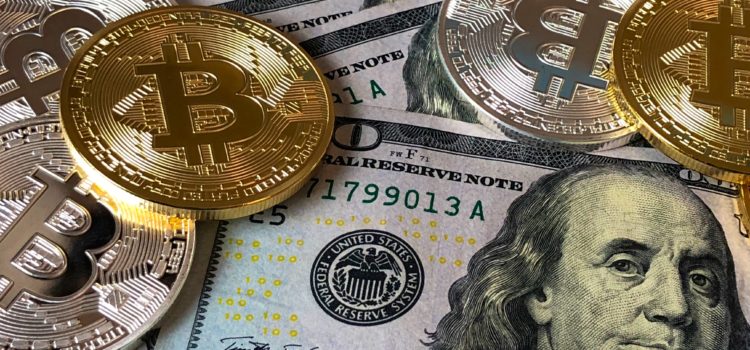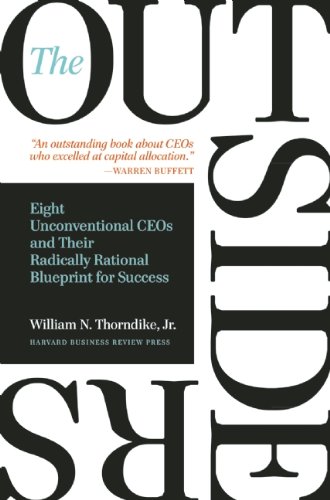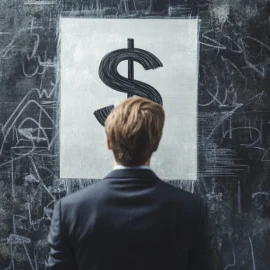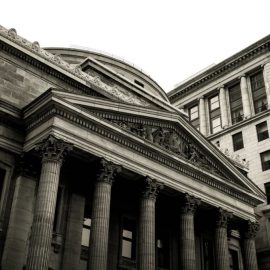

This article is an excerpt from the Shortform summary of "The Outsiders" by William N. Thorndike, Jr. Shortform has the world's best summaries of books you should be reading.
Like this article? Sign up for a free trial here .
Investors have been following in the footsteps of business giant Warren Buffett for decades. But what makes Buffett’s company, Berkshire Hathaway history has been marked by constant success and growth. But what makes this happen?
Berkshire Hathaway is one of the most successful companies of the modern age, and Buffett is a top investor, adviser, and business leader. Find out Berkshire Hathaway’s history, how it became the company you know today, and how Buffett continues to pursue company growth and excellence.
What Is Berkshire Hathaway?
Warren Buffett has garnered staggering returns over the 50-plus years of Berkshire Hathaway history. Starting with buying a textile company in 1965, Buffett grew Berkshire Hathaway into one of the world’s largest companies. Over the course of Berkshire Hathaway history, Buffett’s decisions have made the company into the powerhouse it is today,
Over the yers of Berkshire Hathaway’s history, Buffett excelled in all manners of investments—in both public and private companies, with ownership of both minority and total stakes. He famously made use of insurance float to fund investments in higher-return companies, held a small basket of companies for very long periods of time, and acted aggressively when everyone else was ducking for fear. This proved to be an essential part of Berkshire Hathaway’s performance throughout the company’s history.
Berkshire Hathaway History Overview
Born in 1930 in Omaha, Nebraska, Warren Buffett was the son of a stockbroker and the grandson of a grocery store owner. His early entrepreneurial activities included paper routes and reselling soft drinks.
When he was 19, he read The Intelligent Investor by Benjamin Graham, which converted him into value investing—buying companies that were cheap relative to their intrinsic value (which was based on the company’s balance sheet). He began investing the profits from his ventures, worth about $10,000 in today’s dollars.
When pursuing his MBA, he chose to go to Columbia, where Graham was a professor. After graduating, Buffett asked Graham for a job at his investment firm, but Graham declined. Buffett returned to Omaha to work as a stock broker, where he continued researching investments. Here he happened on GEICO, an insurance company that featured competitive advantages and a great value for the price. He invested most of his money in GEICO.
In 1954, Graham finally offered Buffett a job, and Buffett continued researching underpriced public companies, which were often cheap, low-quality companies (Buffett called them “cigar butts”). When Graham closed his firm in 1956 to focus on other interests, Buffett started his own fund in Omaha, raising $105,000 (a bit under $1 million today). Over the next decade, Buffett continued investing by Graham’s value philosophy, achieving an average 30% annual return even without using debt.
Berkshire Hathaway History: Buffett Refines His Investing Style
But in the mid-1960s, Buffett changed the course of Berkshire Hathaway history. Buffett began deviating from the value method, instead investing in high-quality companies that had a strong competitive profile and long-term prospects. His early investments in this style included Disney and American Express.
In 1965, Buffett purchased the textile company Berkshire Hathaway, a 100-year-old family business, through a hostile takeover. The company was only worth $18 million in enterprise value and was in a commodity business, but Buffett saw it as a platform to build his investments around. After installing a new CEO, who optimized operations, Berkshire Hathaway had $14 million of profit.
Buffett used this profit to buy National Indemnity, an insurance company that generated a large amount of float—the value of premiums received before they are paid out as claims. Insurance companies rely on investment returns from float to generate a profit; sometimes years can pass between when premiums are received and when they need to be paid out. In essence, Berkshire was able to receive cash at 3% and invest it at 13%. Buffett used this float to invest in businesses, sometimes buying them outright. His purchases included a newspaper in Omaha and a local bank in Illinois.
His investing style was further honed in the 1970s, as inflation was a common concern among investors. The typical thinking was that hard assets like gold were the best protection against inflation. Buffett saw differently, and developed key components of his investment thesis:
- He believed that companies that had the ability to raise prices and that had low capital requirements were best protected against inflation. These companies included beloved consumer brands that were market leaders.
- The best way to value a company was based on income statement and cash flows, as well as intangibles like brand power and market share. This was a departure from Graham’s method of using balance sheet and net working capital.
- To avoid leakage of growth to taxes, Buffett would prefer holding investments for a long time. This allowed for longer periods of compounding growth without paying taxes on exiting positions.
In short, where Benjamin Graham might have considered a company too expensive based on its book value, Buffett saw it could be cheap, because of the company’s long-term potential to consistently generate high returns on capital.
One example is illustrative—in 1972, Buffett purchased See’s Candies for $25 million, when it had $7 million in book value and $4.2 million in pretax profits. At 3 times book value, it would have been too expensive for Graham, but at 6 times pretax income and strong brand loyalty, it was a reasonable purchase. Over the decades, See’s Candies has not grown unit sales tremendously, but its strong brand allowed it to raise prices consistently. See’s earned a 32% annual return over 27 years and has provided $1.65 billion in cash flow for reinvestment.
Throughout the 1970s and 1980s, Buffett thus began investing in high-quality, enduring companies, such as the Washington Post, GEICO, and General Foods. He both made minority investments and purchased companies outright, such as with See’s Candies and the Nebraska Furniture Mart.
Berkshire Hathaway History: 1980’s To Today
Among its many investments in the decades since, Berkshire Hathaway is known for these highlights:
- In 1986, he made the firm’s largest investment yet—$500 million to help Tom Murphy (another outsider CEO) acquire ABC, ending up with 18% of the combined company.
- In 1989, he purchased a whopping 7% of Coca-Cola, with the stake being a quarter of Berkshire’s book value
- In the 1980s, Buffett invested in Salomon Brothers, Gillette, and US Airways.
- In the 1990s, Buffett invested in Wells Fargo, General Dynamics, and American Express.
- In 1998, he purchased reinsurer General Re for $22 billion, the largest deal yet.
- Around the time of the September 11 attacks, he opportunistically purchased in industries the market had turned away from, such as with Benjamin Moore Paints and Shaw Carpets.
- In 2003 and 2004, Buffett invested outside equity markets, investing in junk bonds and currency (where he bet against the dollar).
- After a relatively quiet few years, he leapt into action during the 2008 financial recession. In the few years following the collapse of Lehman Brothers, he deployed over $80 billion, including:
- $8 billion in convertible stock from Goldman Sachs and General Electric
- $9.5 billion in mezzanine financing to Mars/Wrigley and Dow Chemical
- $8.9 billion in distressed debt securities
- $26.5 billion for the remaining 77.5% of Burlington Northern Santa Fe, the country’s largest railroad network, that he didn’t own
- $10.9 billion in IBM stock
Berkshire Hathaway’s performance in the stock market is excellent, and it continues to be one of the most highly valued enterprises in the world. Having avoided stock splits in its history, Berkshire shares are now worth hundreds of thousands of dollars each.
Berkshire Hathaway Performance
From 1965 to 2011, Berkshire Hathaway showed a 20.7% annual return rate, compared to 9.3% for the S&P 500.
$1 invested at the beginning would have been worth $6,265 by 2011. This outperformed the S&P by a staggering 100 times.
Berkshire Hathaway’s history is made up of smart and swift acquisitions and an ability to adapt to changing business practices. Warren Buffett’s business strategies and advice are sought after by investors of all levels. This is no surprise based on the many successes and constant growth in Berkshire Hathaway history.

———End of Preview———
Like what you just read? Read the rest of the world's best summary of William N. Thorndike, Jr's "The Outsiders" at Shortform .
Here's what you'll find in our full The Outsiders summary :
- What great CEOs like Warren Buffett do that average CEOs don't
- How to master the art of capital allocation
- How to be a great manager that your team is excited to work with






